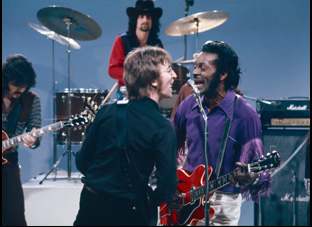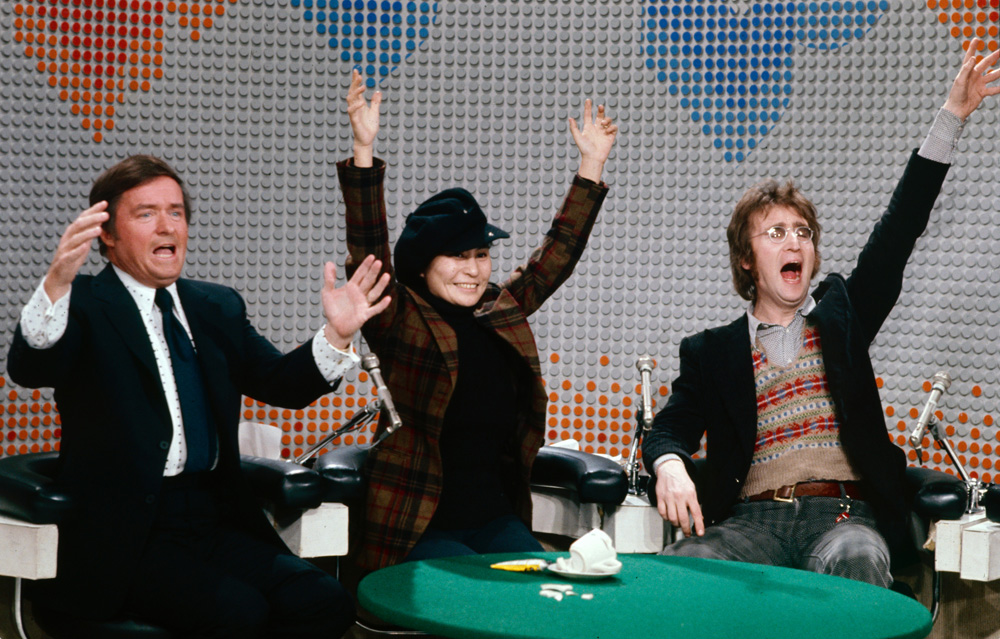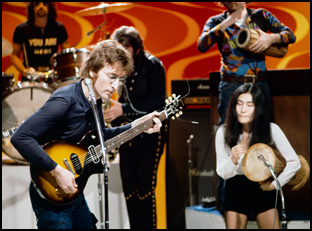When Erik Nelson goes about a restoration for an archival-based documentary, it isn’t only the picture quality he’s thinking about, notably reviving World War II events seemingly lost to the passage of time with “The Cold Blue” and “Apocalypse ’45” where the footage itself was in need of repair, but its place in history where a fresh perspective on the material itself could be just as rejuvenating.
“If you’re going to do a film that’s archive-based, it’s your it’s your responsibility to make it look as good as possible and revitalize it,” Nelson said recently. “‘With ‘The Cold Blue,’ I wanted to make a poetic art film with B-17s. I didn’t want to make a World War II documentary, and then that led to ‘Apocalypse 45,’ which is very much the same thing where we wanted to really put people back into the visceral, uncut realities of what things were like [at the time], [employing] old footage from a modern perspective.”
His latest “Daytime Revolution” emerged from simply looking for something to watch during the pandemic, blown away by what he saw when curiosity led him to look at the week when John Lennon and Yoko Ono were invited to co-host “The Mike Douglas Show” and invite all their own guests. If anyone was well-suited to understand how someone could use their seat of authority for a greater good as Douglas did in February of 1972, it was Nelson after previously serving in a much lower-profile capacity as a senior vice president of Lionsgate’s documentary division in the mid-2000s, where he took chances on backing films such as Werner Herzog’s “Grizzly Man,” “Leonard Cohen: I’m Your Man” and “The U.S. Vs. John Lennon,” the latter of which he couldn’t shake when it recounted the former member of The Beatles’ battle with being potentially extradited during the 1970s for his political views.
That battle likely wouldn’t have happened if then-President Richard Nixon hadn’t seen Lennon and Ono as a threat because of the millions of viewers that tuned in to watch “The Mike Douglas Show” with an eclectic array of guests ranging from activists Jerry Rubin and Bobby Seale, a 37-year-old consumer advocate named Ralph Nader, proponents of biofeedback technology such as Gary Schwartz, macrobiotic chef Hilary Rosen and entertainers ranging from Chuck Berry to performance artist Nobuko Miyamoto. The shows were something America hadn’t seen before or arguably since on such a major platform when Douglas could pull in nearly half the viewing public at a time when there were only three national networks and making the week even more of a historical anamoly, the broadcasts were overseen in part by a young Roger Ailes, who would eventually found Fox News.
When Nelson was rapt by what he saw, “Daytime Revolution” unfolds with little additional augmentation from its original presentation, moving episode by episode through the week with some present-day perspective from the guests that appeared and E.V. DiMassa, a young producer who was on set at the time, and while some of the clothes and hairstyles may look a little different, many of the issues addressed make it seem like it was all filmed yesterday. That makes the film’s arrival for a one-night theatrical event on October 9th, timed to John Lennon’s 84th birthday, equally fortuitous with a U.S. presidential election coming up and Lennon and Ono, who were ahead of their time then, remain in conversation about a better future. On the eve of the release “Daytime Revolution,” Nelson spoke about how he took it upon himself to bring this small-screen phenomenon to the big screen, embracing the limitations of a set structure for the film and how the past could become indistinguishable from the present.
Because of “The U.S. vs. John Lennon,” and because I remember the shows being broadcast back in 1972, I was aware that this cultural transgression had happened and that these Douglas shows had a huge impact on John Lennon’s life and career because if he hadn’t done those shows, Richard Nixon wouldn’t have tried to deport him. It was that simple. Armed with that and the fact that I knew we were sailing into a real apocalyptic and traumatic election year, I thought the time was right to make this film. Once I started diving deep into the raw shows, I realized that they captured a lot of things about America’s culture and politics and mass media that went beyond just John and Yoko. This content contained multitudes.
The shows were released in a VHS box set back in 1998, believe it or not — and they’re only on VHS, so good luck finding them — but I watched them and I remember being very excited saying, “Oh boy, there’s a great movie in this.” To be honest with you, the only other time in my career where I’ve had that same revelation was when I saw Werner Herzog’s first cut of “Grizzly Man,” which was very, very different from what wound up coming out. I remember I was nervous because I had a lot at stake as I produced the film and gotten it going and I refused to watch the film for way too long, but I remember at three in the morning going out to my home office, putting the VHS tape in and watching “Grizzly Man,” and if someone had told me at that moment, the trajectory of that film, I would have said, “Yeah, it makes sense” because you could just sense that there was something going on there.
The same thing goes with these Lennon shows because the originals were each 90 minutes long, so it was maybe seven-and-a-half hours of total content, which we had to boil down to about 70 minutes. We had to shrink everything by nine tenths to create the film, but I knew that what Kubrick called the non-submersible units were there, so the next three years was spent just perfecting it and making the film work, which is always the fun part.
I’ve heard that it took a year to crack the opening. When did things start clicking for you?
It’s strange, opens and closes are always the most challenging. The ending was always clear. We had these great, inspiring, hopeful, present-day quotes from the people we interviewed who were on the set 50 years ago and I knew that the Q&A that John [Lennon] had done was going to be a great ending through the credit roll. But there was a tremendous amount of exposition that needed to get done in the open of the film and it was just incredibly hard. There were a lot of different versions that we did and none of them seemed to work. This isn’t a film about the thing, but this is the thing and [I’ve likened it to] “Summer of Soul,” which is an amazing film, but it’s as much about the thing as it is the thing. It has people contextualizing the film outside of the event. And what I wanted to do in this film was to give the audience the feeling that they’re watching this unfolding conceptual art piece that John and Yoko did in the way that it originally unfolded, pinning it down to what was in the culture at the time.
I made a decision not to interview anybody who was not on the stage at that time, just keep it to the people who were in the Walnut Street Studios in Philadelphia during those tapings and get their insights as both participants and as viewers. In some ways, that simplified it, but because I had a very restricted filter, it made it challenging just to make sure everything flowed properly and when you cut a 90-minute Mike Douglas show down to 15 minutes that also featured the people who we spoke to today, that definitely reduces your range of operation. There also were only two cameras on stage, so we didn’t have the luxury of cutaways, and we had to be very judicious on how we cut the material together. So it was tricky. A lot of work was done to hopefully create something that just seems straightforward, simple, and non-mediated because I feel very strongly in my films not to impose a director’s visual or editorial [imprimatur]. I like the material to speak for itself.
That’s interesting because while I feel that’s true, was there anything coming to the fore when as you mentioned we’re in this heated political moment?
There’s a difference between [that] and leaving my fingerprints on the actual film so it seems very unmediated and not micromanaging every single decision. I didn’t spend two years in the edit room figuring out ways to add graphics, but people like to think that Woodstock in August of ’69 was the high watermark of the counterculture, and I maintain that John and Yoko two-and-a-half years later, showcasing the best minds, the best culture, the best music, the best creative energy of the counterculture on a mainstream platform reaching 40 million Americans to an audience who hadn’t been exposed to this represents the high watermark of the counterculture. If you think that six months later, Richard Nixon was going to win 49 states, and John and Yoko didn’t tape these shows in February of 1972 [when] the world was their oyster, we could have won. There was a sense of optimism in the air. And to see that dissipate and to imagine that Roger Ailes, the man who would create Fox News and in essence put a stake in the heart of American democracy, is sitting there [as a producer on “The Mike Douglas Show”] watching this go down and stroking his chin, as Ralph Nader says, all of that I wanted to capture in the film.
I also saw incredible prescience in what John and Yoko were saying or what their guests [such as] Bobby Seale said. Even Jerry Rubin has a lot of points about his father being killed by the system and trying to atone for his father’s loss by fighting it, that same sort of rage of the working class that’s driving this election in swing states [now] or Ralph Nader talking about you have to get out and vote or Yoko saying, “We can’t turn our backs on women voters.” The fact that these are front-and-center issues right now and that my film is opening up one month before the election is entirely intentional. There is no coincidence in any of this.

That’s safe to say. When we reached out to Hillary Rosen, who was the 23-year-old macrobiotic chef, she was floored anybody would even be asking. None of the people who we contacted and tracked down had given this much thought and they were all somewhat surprised that we wanted to make a movie of it, which was kind of cool. I never doubted that we could make a movie of it and it was worth making, but they definitely were, “Really?” And then we had to send them copies of the shows, [since] almost without exception none of them had seen them until we showed it to them 50 years later. And Nobuko [Miyamoto], when she says in the open of the film, “I haven’t seen this in 50 years,” she hadn’t seen this in 50 years, so we made a point of showing them their appearance and film them watching [before] we did the interviews, so they saw it and had a fresh reaction to what they were seeing, and then we rolled tape. That gave it an immediacy to it and every one of them, you see Ralph Nader watching it and it’s very alive and it’s like they’re doing a talk show appearance. It’s in the moment and that then connects with the immediacy of the actual broadcast with John and Yoko.
There’s a beautiful bit of poetry in learning this will be released on John Lennon’s birthday.
Yeah, this will be screening on his 84th birthday. That was Kino Lorber’s idea and I think it’s a great one and in a lot of ways we’re trying to do an antidote. I’m delighted that if this is perceived as a left wing film reaching out to a partisan audience, but that’s not really what the message is. The message was Mike Douglas turned his set into America’s living room and truly created a very conversational, open-minded forum for extreme beliefs very generously and this is for people who might be thinking, “Oh my God, it’s so depressing out there. What are we going to do? Is there any hope left?” And I like the idea on Lennon’s 84th birthday, his and Yoko’s prescient, optimistic and creative message and vision is reinvented and redeployed back into the American body politic.
“Daytime Revolution” will screen in select theaters across the country on October 9th. A full list of cities and theaters is here.





